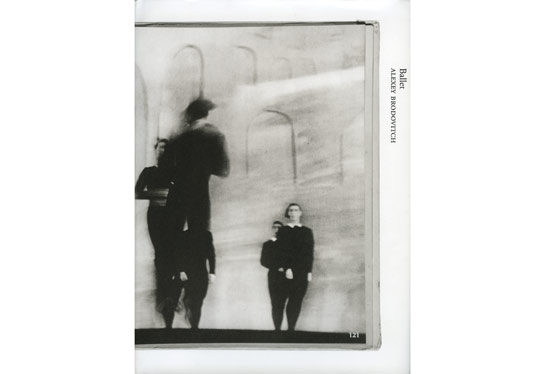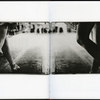Review: Ballet by Alexey Brodovitch (Errata Edition)

The history of the photobook is filled with many absolutely amazing examples, many of which remain only known to experts - or those fortunate enough to have the means to acquire them. The main reason for this is mundane: It’s not because some elitists pick books and decide they are great. It’s because most of those books were printed once and then sold over the course of a few years. To make matters worse, there’s the Velvet-Underground effect: Many of those books didn’t even sell well, while inspiring what ultimately became a real movement. In fact, some books are so hard to get because they sold just a few copies, and the rest were then literally destroyed. The case of Alexey Brodovitch’s Ballet is particularly heart-wrenching: According to the main essay in this reprint, the original print run was five hundred copies, which were not sold through any major bookstores. In 1956, a fire at the artist’s farmhouse destroyed the majority of the negatives, along with most of his library, plus a collection of signed lithographs by Picasso and Matisse. There was another fire, in the next home, too. (more)
Alexey Brodovitch of course is widely known for his long work as an art director for Harper’s Bazaar from 1938 to 1958. But he also published a photobook entitled Ballet in 1945. The book, now available as part of Errata Editions, is nothing but astounding. With a background in ballet productions, Brodovitch had taken “souvenir” photographs between 1935 and 1937 of ballet companies visiting New York. The use of a 35mm Contax camera, available light, plus the relatively slow film at the time could have been considered a serious obstacle. But Brodovitch wanted to capture ballet the way he saw and felt it. And that included taking some of the often blurry and/or underexposed negatives and cropping small parts even further or messing with them in the darkroom. Only a few of those negatives - then on loan by someone else - survived the fires at his homes.
In the book, Brodovitch made the images transcend their sources. Presented full bleed, often heavily manipulated (in addition to cropping there are various other things he did), the photographs were transformed into the most amazing experience, an expression of ballet itself. The images jump and move and dance in ways that must have been revolutionary in 1945 and that still are (or maybe I should say are again) revolutionary today. Photobooks these days often are made by photographers, with maybe a little bit of input by a designer. Ballet, in contrast, clearly was made by a visual artist who knew everything about design, and who wasn’t so concerned about the sacredness of a photograph. If it needed to be cropped, then it was cropped. If the grain needed to be brought out even more, that it was brought out. If the spread required a photo to be flipped, it was flipped. Brodovitch was after the effect, and the result is stunningly successful (and I don’t even care about ballet!).
The success of the book is based on the fact that everything was done for a purpose, with a clear intent in mind. Each of the design or photography related decisions was made so that the final result would work best. That is, of course, how you want to produce a photobook, and Ballet might just be a perfect example of photobook making that is, well, simply timeless.
Alexey Brodovitch: Ballet, photography by Alexey Brodovitch, essays by Edwin Denby, Kerry William Purcell, Jeffrey Ladd, 142 pages, Errata Editions, 2011
Spreads from the book kindly provided by Errata Editions - thank you!


